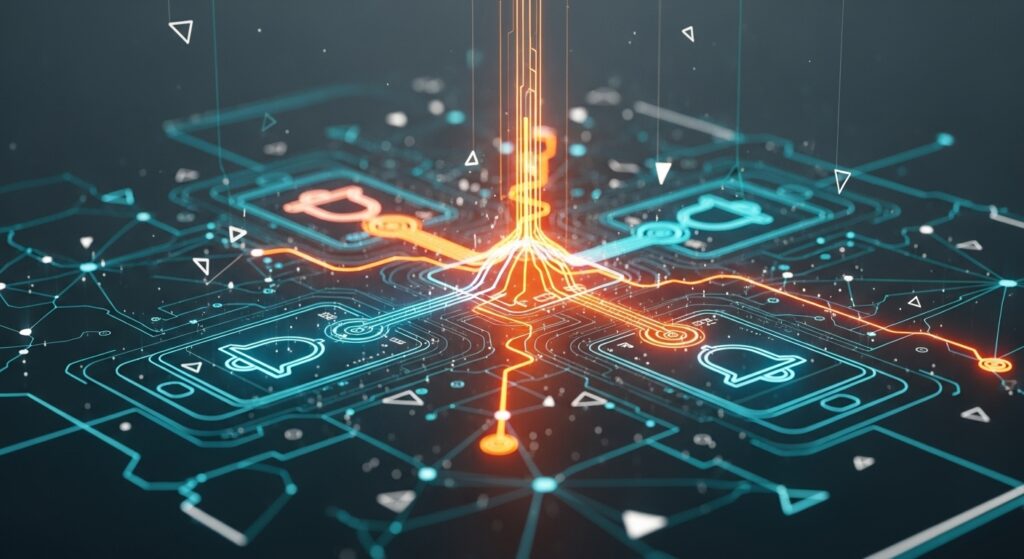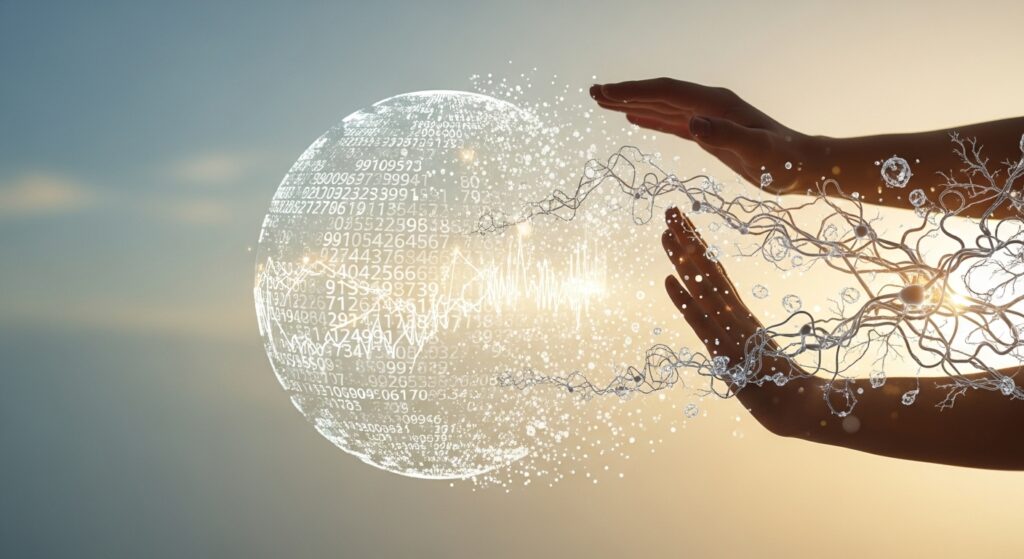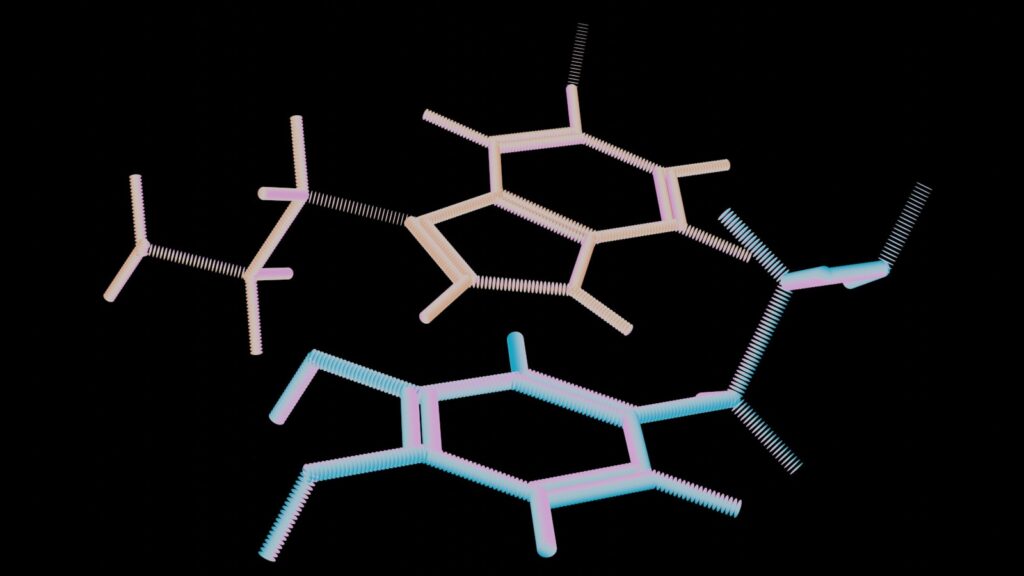Key Takeaways
- Dopamine is the Brain’s Motivation Fuel, Not Just Pleasure: Far from being a simple “pleasure chemical,” dopamine primarily drives anticipation, motivation, and learning, pushing us to seek rewards and form habits, which is foundational to understanding behavioral psychology digital.
- Digital Platforms Are Masterful at Leveraging Reward Systems: Social media, e-commerce, and content platforms expertly deploy digital reward mechanisms like notifications, likes, personalized feeds, and gamification to trigger dopamine release and cultivate reward systems online engagement.
- Intermittent Variable Rewards Create Powerful Engagement Loops: The unpredictable nature of digital rewards (e.g., not knowing when your next “like” will come) mimics slot machines, making platforms highly addictive and driving the social media dopamine loop and continuous psychology of digital clicks.
- Neuromarketing Unlocks Deeper User Understanding: By applying insights from neuroscience, neuromarketing online behavior allows marketers to design experiences that align with how the brain processes information and rewards, leading to more effective and engaging dopamine digital marketing strategies.
- Ethical Design is Paramount: While powerful, leveraging dopamine requires responsibility. Marketers must strive for conscious engagement over addictive design, ensuring that digital reward mechanisms enhance user experience without compromising well-being.
In the vast, ever-expanding universe of the internet, every click, scroll, and tap is a tiny ripple in a colossal ocean of data. But what unseen currents guide these seemingly impulsive actions? Why do we find ourselves relentlessly refreshing our social feeds, eagerly awaiting the next notification, or succumbing to the allure of “just one more episode”? The answer, surprisingly, lies deep within our brains, governed by a sophisticated internal compass: dopamine.
Imagine a hidden architect, meticulously designing every digital experience to appeal to our most primal neurological urges. This isn’t science fiction; it’s the reality of modern dopamine digital marketing. From the satisfying “ping” of a new message to the endless scroll of personalized content, digital platforms have become exquisitely tuned instruments, playing a symphony that resonates with our innate reward systems online engagement.
This isn’t about manipulation in its crudest sense, but a profound understanding of behavioral psychology digital and how our brains process anticipation, motivation, and reward. As marketers, creators, and even consumers, grasping the intricate dance between dopamine and our digital lives is no longer a luxury—it’s a necessity. It’s the key to unlocking genuinely engaging user experiences, fostering loyalty, and building a digital presence that doesn’t just capture attention but holds it, respectfully and effectively.
In this extensive exploration, we will peel back the layers of the digital world, venturing into the fascinating realm of neuroscience and psychology. We’ll uncover how the very architecture of our brains makes us susceptible to certain digital cues, explore the ingenious ways platforms leverage these insights, and arm you with the knowledge to craft more impactful and ethical digital reward mechanisms. Prepare to understand the hidden forces driving the psychology of digital clicks and how you can harness them for strategic success.
The Dopamine Primer: Understanding the Brain’s Reward System
Before we delve into the digital intricacies, it’s crucial to understand our star player: dopamine. Often oversimplified as the “pleasure chemical,” dopamine’s role is far more complex and fascinating, especially in the context of reward systems online engagement.
What is Dopamine? Beyond “Pleasure.”
Dopamine is a neurotransmitter, a chemical messenger that carries signals between nerve cells (neurons) in the brain. While it does play a role in experiencing pleasure, its primary function is often misinterpreted. Think of dopamine less as the pleasure itself, and more as the anticipation of pleasure, the motivation to seek a reward, and the learning mechanism that reinforces behaviors leading to those rewards.
When we engage in an activity that might lead to a reward – whether it’s food, social interaction, or a digital notification – dopamine surges. This surge doesn’t necessarily make us feel good in the moment, but it tells our brain, “Hey, this is important! Remember this action, because it could lead to something good.” This mechanism is fundamental to how we learn, form habits, and are driven to achieve goals. In behavioral psychology digital, this translates directly into our propensity to engage with platforms that promise potential rewards.
“Dopamine is not about pleasure, but about the pursuit of pleasure. It’s the neurochemical of wanting, not liking. This distinction is critical for understanding addiction and motivation.”
– Kent Berridge, Neuroscientist
This dopamine digital marketing insight means that the excitement isn’t in receiving the like, but in the anticipation of receiving it, and the motivation to perform actions that might earn it.
The Reward Prediction Error
One of the most powerful aspects of dopamine’s function is the reward prediction error. This concept, central to reinforcement learning, describes how dopamine neurons fire most strongly not when a reward is received, but when a reward is better than expected.
Here’s how it works:
- Prediction: Your brain predicts an outcome based on past experiences.
- Outcome: You perform an action and receive an outcome.
- Error Signal:
- If the outcome is better than expected, dopamine neurons fire, signaling a “positive prediction error.” This strengthens the behavior that led to the unexpected reward.
- If the outcome is worse than expected or entirely absent, dopamine activity decreases, signaling a “negative prediction error.” This helps us learn to avoid such actions in the future.
- If the outcome is exactly as expected, dopamine activity remains baseline.
This mechanism is incredibly potent in online engagement. Imagine clicking on a notification expecting a routine update, only to find a personalized message or a truly insightful piece of content. That unexpected positive experience creates a powerful dopamine spike, reinforcing your habit of checking notifications and exploring content on that platform. Conversely, a stream of irrelevant or disappointing notifications will lead to a negative prediction error, reducing your future engagement.
The Intermittent Reinforcement Schedule
Perhaps the most potent aspect of dopamine’s role in digital reward mechanisms is its response to intermittent variable reinforcement schedules. This is a fancy term for what you see in slot machines, where rewards are delivered randomly and unpredictably.
Consider these scenarios:
- Fixed Ratio: Every 5th action gets a reward. Predictable, but engagement drops after the reward.
- Fixed Interval: A reward every 10 minutes. Also predictable, leading to less consistent engagement.
- Variable Ratio (Intermittent Reinforcement): Rewards are delivered after an unpredictable number of actions. This is where the magic happens.
When a reward arrives sporadically, our brain never quite learns when it will come, only that it might come. This uncertainty keeps dopamine levels high, as the brain is constantly anticipating the potential reward. This creates incredibly strong habits and high rates of seeking behavior because the motivation to keep trying never fully diminishes.
This is the bedrock of the social media dopamine loop. You don’t know which post will get a flurry of likes, which message will be delightful, or when a new, interesting piece of content will appear in your feed. The unpredictability keeps you scrolling, checking, and refreshing, constantly seeking that next satisfying (and unpredictable) reward. Understanding this is critical for any neuromarketing online behavior strategy.
The Digital Playground: Where Dopamine Thrives
With a firm grasp of dopamine’s role, let’s explore how the digital world has masterfully engineered environments that trigger and sustain these powerful neural responses. Every aspect of modern digital design, from app interfaces to notification sounds, is subtly (or overtly) designed to leverage our reward systems online engagement.
Social Media: The Ultimate Dopamine Loop
Social media platforms are arguably the most sophisticated architects of digital reward mechanisms. They are built from the ground up to create and perpetuate a social media dopamine loop.
- Likes, Shares, Comments: These are immediate, tangible social validations. Each notification of a “like” or a positive comment delivers a small, satisfying hit of dopamine. The more unexpected or frequent, the stronger the effect.
- Notifications: The very act of a notification appearing – a red badge, a distinct sound – signals the possibility of a reward. It could be something important, something interesting, or just a trivial update. The uncertainty keeps us checking.
- Endless Scroll: Algorithms are designed to present an unending stream of content, often personalized to our tastes. There’s always “one more” potentially interesting post just below the fold, leveraging the intermittent reinforcement schedule to keep us engaged indefinitely.
- FOMO (Fear of Missing Out): The constant stream of friends’ activities, events, and news creates a subtle anxiety that if we disengage, we might miss something important or exciting. This pushes us back to the platforms, seeking to alleviate that anxiety and find our next dose of social validation or information.
Consider the interplay of these features:
| Social Media Feature | Dopamine Trigger / Reward Mechanism | How it Drives Engagement |
|---|---|---|
| Notifications | Anticipation of new content/social input | Creates a “pull” to check the app, leveraging prediction error. |
| Likes/Reactions | Social validation, affirmation | Reinforces posting behavior, provides immediate gratification. |
| Comments/DMs | Personal interaction, belonging | Fosters deeper connection, encourages conversation/reply. |
| Endless Scroll | Novelty seeking, intermittent reward | Keeps users searching for the next interesting piece of content. |
| Algorithmic Feeds | Personalization, relevant content | Delivers content more likely to generate positive prediction error. |
| Stories/Reels | Ephemeral content, novelty, urgency | Encourages frequent checking to avoid missing out. |
This constant flow of potential social rewards creates a powerful social media dopamine loop, making it incredibly hard to disengage. This is a prime example of neuromarketing online behavior in action.
E-commerce and Gamification: The Thrill of the Deal
The psychology of digital clicks extends far beyond social validation. E-commerce platforms and digital products have also become adept at employing digital reward mechanisms to drive purchases, sign-ups, and sustained use.
- Limited-Time Offers & Flash Sales: These create urgency and scarcity. The “reward” is not just the product, but getting it at a perceived bargain before it’s gone. The fear of missing out on a good deal triggers a strong dopamine response that drives impulsive buying decisions.
- Loyalty Programs & Points: Earning points, badges, or climbing status tiers provides a continuous, albeit delayed, reward. Each purchase brings you closer to a discount or exclusive perk, reinforcing buying behavior. These are clear digital reward mechanisms designed to foster repeat business.
- Progress Bars & Checklists: In onboarding processes, online courses, or even complex forms, seeing a progress bar fill up or a checklist complete provides micro-rewards. It signals progress and motivates users to continue to the next step, leveraging the brain’s desire for completion and accomplishment.
- Mystery Boxes & Random Rewards: Some platforms offer “spin the wheel” games for discounts or incorporate elements where the exact reward is unknown until the point of engagement. This variable reinforcement is highly effective in driving engagement, akin to a digital slot machine.
These tactics are all part of sophisticated dopamine digital marketing strategies, designed to tap into our innate desire for achievement and reward.
Content Consumption: The Endless Scroll
Beyond social media, the very act of consuming digital content is heavily influenced by dopamine. Modern content platforms, from streaming services to news aggregators, are designed for continuous engagement.
- Personalized Recommendations: Algorithms learn our preferences and serve up content we’re likely to enjoy. This creates a high probability of a positive prediction error – finding exactly what you want, or even something surprisingly good, reinforces the behavior of trusting the platform’s recommendations. This is key to
neuromarketing online behavior. - Autoplay & Next Episode Logic: Streaming services, in particular, excel at minimizing decision fatigue and maximizing continuous consumption. By automatically playing the next episode, they remove a potential point of disengagement, making it easier to continue the “flow” of content and delaying the natural pause where you might reassess your activity.
- Novelty Seeking: Our brains are wired to seek out new information and experiences. Digital content platforms feed this hunger with a seemingly endless supply of articles, videos, and podcasts. The constant availability of novel content triggers dopamine, encouraging further exploration and deeper dives, driving the
psychology of digital clicks.
This constant, personalized, and often automated delivery of content ensures that our brains are kept in a state of continuous anticipation, making disengagement feel like a loss rather than a choice.
Neuromarketing in Action: Harnessing Dopamine for Ethical Growth
Understanding how dopamine works isn’t just an academic exercise; it’s a powerful tool for marketers and content strategists. By intentionally designing experiences that resonate with our neural reward systems, we can create more effective, engaging, and ultimately, more successful digital campaigns. This is the essence of neuromarketing online behavior.
Understanding User Intent and Anticipation
Effective dopamine digital marketing begins with anticipating user needs and desires. Before a user even clicks, their brain is already making predictions.
- Curiosity Gaps: Crafting headlines and snippets that create a “curiosity gap” – hinting at valuable information without fully revealing it – is a powerful dopamine trigger. The anticipation of satisfying that curiosity drives clicks.
- Problem-Solution Frameworks: Users often arrive with a problem. Positioning your content or product as the clear solution activates the reward system by promising relief or gain.
- Visual Cues: Design elements like progress bars, notification badges, or even the layout of a landing page can prime users for what’s next, building anticipation for the reward that follows a click or action.
By understanding what users are expecting and how to subtly exceed those expectations, we can generate positive prediction errors that reinforce engagement.
Crafting Compelling Digital Reward Mechanisms
Designing effective digital reward mechanisms requires strategic thinking. It’s not just about giving something away; it’s about how and when you give it.
- Immediate vs. Delayed Rewards: Immediate gratification (like a successful download after a click) is powerful. Delayed rewards (like a loyalty program discount after several purchases) require a clear value proposition and consistent reinforcement to keep users engaged over time.
- Variable vs. Fixed Rewards: As discussed, variable rewards are incredibly potent for driving sustained engagement. Can you introduce an element of surprise or unpredictability?
- Intrinsic vs. Extrinsic Rewards:
- Intrinsic rewards come from within: the joy of learning, the satisfaction of completing a task, feeling connected to a community. These are powerful and sustainable.
- Extrinsic rewards are external: discounts, badges, points. While effective, they can sometimes diminish intrinsic motivation if overused. The best
reward systems online engagementblend both.
Here are some examples of effective digital reward mechanisms in practice:
- Personalized Content Streams: Curated news feeds, product recommendations, or email newsletters based on past behavior.
- Gamified Elements: Leaderboards, points, badges, virtual currency, or “leveling up” for completing tasks.
- Exclusive Access: Early bird access to products, content, or community features for loyal users.
- Progress Indicators: Filling out a profile, completing a course module, or tracking order delivery.
- Surprise Bonuses: An unexpected discount, a free upgrade, or a personalized “thank you” message.
- Interactive Quizzes/Polls: Immediate feedback or a “reveal” of results.
The Power of Personalization and Prediction
In the age of AI, personalization has become a cornerstone of effective dopamine digital marketing. Algorithms constantly analyze user behavior to predict what they want next, creating highly relevant digital reward mechanisms.
- Dynamic Content: Websites and emails that adapt their content based on a user’s browsing history, demographics, or purchase intent. This increases the likelihood of delivering a “better than expected” experience.
- Retargeting Campaigns: Showing ads for products a user previously viewed. This leverages existing interest and shortens the path to purchase, reducing friction and increasing the likelihood of a dopamine hit from completing a desired action.
- Predictive Analytics: Foreseeing customer needs and proactively offering solutions or relevant content before they even search for it. This can create delightful “aha!” moments, generating significant positive prediction errors.
“The most effective digital experiences aren’t just responsive; they’re anticipatory. They leverage data to predict user needs and deliver solutions before the user even articulates them, creating a powerful sense of empowerment and satisfaction.”
– Nir Eyal, Author of “Hooked: How to Build Habit-Forming Products”
This level of intelligent design speaks directly to our psychology of digital clicks, making every interaction feel custom-tailored and inherently rewarding.
The Role of Scarcity and Urgency
We’ve touched on this briefly, but scarcity and urgency are potent dopamine activators. They trigger a primal fear of loss, which can be a more powerful motivator than the promise of gain.
- Limited Stock / Limited Edition: “Only 3 left!” or “Exclusive release!” creates a sense of urgency, driving immediate action to secure the perceived reward before it’s gone.
- Countdown Timers: For sales, webinars, or product launches, a ticking clock explicitly communicates that the opportunity is fleeting, activating the dopamine system to encourage quick decision-making.
- Flash Sales: Short, intense sales periods create a high-stakes environment where quick action is rewarded.
- Disappearing Content: Snapchat stories, Instagram reels, or ephemeral content formats encourage immediate viewing to avoid missing out.
These tactics, while effective, must be used judiciously and ethically. Falsely creating scarcity or urgency can erode trust. When used genuinely, however, they can provide a powerful nudge, leveraging the inherent reward systems online engagement in our brains.
SEO-Enriching Internal Link Example:
For more in-depth strategies on connecting with your audience, explore our comprehensive guide to content strategy.
Ethical Considerations and The Dark Side of Dopamine
The power of dopamine in driving reward systems online engagement is undeniable, but with great power comes great responsibility. The very mechanisms that make digital platforms so engaging can, if misused or over-engineered, lead to negative consequences like addiction and decreased well-being.
Addiction and Digital Well-being
The social media dopamine loop, the endless scroll, and variable reward schedules are remarkably similar to the mechanisms that drive gambling addiction. When dopamine systems are constantly activated, seeking more and more reward, it can lead to:
- Compulsive Behavior: An inability to stop checking devices, refreshing feeds, or engaging with platforms even when it interferes with daily life.
- Tolerance: The need for increasingly stronger stimuli or more frequent engagement to achieve the same dopamine “hit.”
- Withdrawal Symptoms: Anxiety, irritability, or restlessness when unable to access digital platforms.
- Neglect of Other Activities: Prioritizing digital engagement over real-world relationships, work, or hobbies.
As practitioners of dopamine digital marketing, we have an ethical imperative to be aware of these potential downsides. The goal should be conscious engagement, not addiction.
Designing for Conscious Engagement, Not Addiction
Ethical neuromarketing online behavior means designing with the user’s well-being in mind, not just their engagement metrics.
- Transparency: Be clear about how your platform works and why certain features are designed the way they are.
- User Control: Provide features that empower users to manage their digital consumption, such as screen time limits, notification controls, and “focus mode” options.
- Meaningful Rewards: Focus on providing intrinsic rewards – genuine learning, social connection, personal growth – rather than solely relying on superficial extrinsic rewards that can become a treadmill.
- Friction by Design: Sometimes, adding a small amount of friction (e.g., a “Are you sure?” prompt before an impulsive purchase) can give users a moment to reflect and make a more conscious decision.
- Prioritizing Value Over Volume: Instead of relentlessly pushing for more clicks or longer session times, focus on delivering genuine value that leaves users feeling satisfied and enriched, rather than drained.
The line between highly engaging and potentially addictive is fine. Responsible dopamine digital marketing walks this line with integrity, seeking to build lasting relationships based on value and trust, not compulsive behavior.
Practical Strategies for Dopamine-Driven Digital Marketing
Now that we understand the intricate relationship between dopamine and digital engagement, let’s translate this knowledge into actionable strategies for your dopamine digital marketing efforts.
Optimizing User Experience (UX) for Reward Systems Online Engagement
A seamless, intuitive, and enjoyable UX is the foundation for any successful digital strategy that leverages reward systems. A frustrating experience negates any dopamine potential.
- Speed and Responsiveness: Slow loading times or buggy interfaces create negative prediction errors. Ensure your website, app, and content load quickly and respond smoothly. This primes users for a positive experience.
- Clear Navigation: Users should easily find what they’re looking for. A clear path to desired content or actions reduces cognitive load and increases the likelihood of a positive reward when they find it.
- Visual Appeal: Aesthetically pleasing design, high-quality images, and engaging videos create a positive emotional response, setting the stage for dopamine release.
- Minimizing Friction: Streamline processes like sign-ups, checkouts, and content access. Every unnecessary step is a potential point of disengagement.
SEO-Enriching Internal Link Example:
For more insights on making your website a joy to navigate, consider our tips on optimizing user experience.
Leveraging Personalization and Segmentation
The more relevant your content and offers are to an individual, the higher the chance of triggering a positive prediction error.
- Dynamic Website Content: Display different hero images, headlines, or calls to action based on a user’s location, browsing history, or stated preferences.
- Email Marketing Automation: Send personalized emails based on user behavior (e.g., abandoned cart reminders, birthday discounts, recommendations after a purchase).
- Audience Segmentation: Divide your audience into smaller groups based on shared characteristics and tailor messages specifically for each segment. This ensures that the potential reward (e.g., a relevant product, an insightful article) is highly likely to be valued.
Personalization is about making the user feel seen and understood, which is a powerful intrinsic reward that fuels reward systems online engagement.
Implementing Gamification Elements
Injecting game-like mechanics into non-game contexts can significantly boost reward systems online engagement.
- Points and Badges: Reward users for completing desired actions (e.g., leaving a review, sharing content, reaching a profile completion milestone).
- Leaderboards: Foster healthy competition and social comparison. Users are motivated to climb the ranks for recognition.
- Progress Bars: Visually show users how close they are to a reward or goal (e.g., “75% complete on your profile!”). This provides incremental dopamine hits with each step forward.
- Interactive Quizzes and Polls: Engage users by asking for their input and immediately rewarding them with results, insights, or personalized recommendations.
- “Surprise and Delight”: Occasionally offer unexpected, small rewards (e.g., a random discount code, a free piece of premium content) to leverage variable reinforcement.
These digital reward mechanisms transform mundane tasks into engaging experiences, tapping into our innate desire for achievement and recognition.
Mastering the Art of Notifications and Alerts
Notifications are a direct line to the dopamine system, but they must be managed carefully.
- Relevance: Only send notifications that are genuinely useful or interesting to the recipient. Irrelevant notifications lead to negative prediction errors and eventual opt-outs.
- Timing: Send notifications when they are most likely to be acted upon (e.g., a reminder about an event an hour before it starts, rather than a day before).
- Value Proposition: Clearly state the benefit or reward of opening the notification. “New content you’ll love!” is more compelling than “Check out our blog.”
- User Control: Always provide easy ways for users to customize or turn off notifications. Respecting their preferences builds trust.
- Avoiding Fatigue: Don’t overdo it. A constant barrage of pings will lead to users ignoring all notifications or uninstalling your app.
Strategic notification use can effectively create social media dopamine loops for your brand, but only if executed thoughtfully.
A/B Testing and Analytics
The human brain is complex, and what works for one audience might not work for another. Continuous testing and analysis are vital.
- Test Different Reward Mechanisms: Experiment with various types of rewards (e.g., a discount vs. free shipping, a badge vs. points) to see what resonates most with your audience.
- Optimize Timing and Frequency: Use data to determine the optimal time to send emails, push notifications, or present gamified elements.
- Analyze User Journeys: Track how users interact with your
digital reward mechanisms. Where do they drop off? What actions lead to conversions? - Measure Impact on Key Metrics: Are your dopamine-driven strategies actually leading to increased engagement, conversions, loyalty, or time spent on site?
By embracing a data-driven approach, you can continuously refine your dopamine digital marketing strategies, ensuring they are truly effective in driving the psychology of digital clicks and fostering meaningful reward systems online engagement.
SEO-Enriching Internal Link Example:
For more on perfecting your calls to action and guiding user behavior, check out our guide on crafting compelling calls to action.
Conclusion
Our journey through the fascinating intersection of dopamine and digital has revealed a profound truth: the digital world isn’t just a collection of websites and apps; it’s an intricate landscape designed to interact with the very core of our neurological reward systems. From the subtle art of dopamine digital marketing to the powerful forces driving reward systems online engagement, every click, scroll, and share is influenced by the brain’s insatiable quest for anticipation, motivation, and reward.
We’ve seen how the social media dopamine loop keeps us scrolling, how digital reward mechanisms in e-commerce entice us to buy, and how the psychology of digital clicks is expertly manipulated by algorithms serving up personalized content. Understanding concepts like the reward prediction error and intermittent reinforcement provides marketers with an unparalleled insight into neuromarketing online behavior and behavioral psychology digital.
But with this knowledge comes a significant responsibility. The power to design experiences that tap into our fundamental neural drivers is immense, and it demands an ethical approach. Our goal as marketers and content creators should be to create engaging, valuable experiences that empower users, not ensnare them. It’s about building trust, fostering genuine connection, and contributing positively to digital well-being, while still achieving our marketing objectives.
The future of digital marketing isn’t just about what we sell or what content we produce; it’s about how we understand and respect the human brain. By designing with intention, empathy, and a deep appreciation for the science behind reward systems online engagement, we can move beyond mere clicks and cultivate truly meaningful, lasting digital relationships.
Take Action: Harnessing Dopamine Ethically for Your Brand
Are you ready to transform your digital strategy from simply pushing content to intelligently inspiring engagement?
- Audit Your Current Digital Touchpoints: Identify where your existing
digital reward mechanismsare, and how you might enhance them using the principles of anticipation and variable reinforcement. - Prioritize User Value: Brainstorm ways to deliver unexpected value or delightful micro-rewards that exceed user expectations, fostering positive prediction errors.
- Experiment with Gamification: Consider small, ethical gamified elements to boost engagement and completion rates for key actions on your site or app.
- Refine Your Personalization: Leverage data to create hyper-relevant content and offers that speak directly to your audience’s needs and desires.
- Commit to Ethical Design: Review your notification strategies and user flows to ensure you’re empowering users, not promoting compulsive behavior.
Embrace the power of dopamine, not as a tool for manipulation, but as a blueprint for crafting compelling, human-centered digital experiences that truly resonate. The future of dopamine digital marketing is here, and it’s built on understanding the profound connection between our brains and the digital world.








